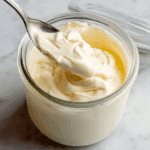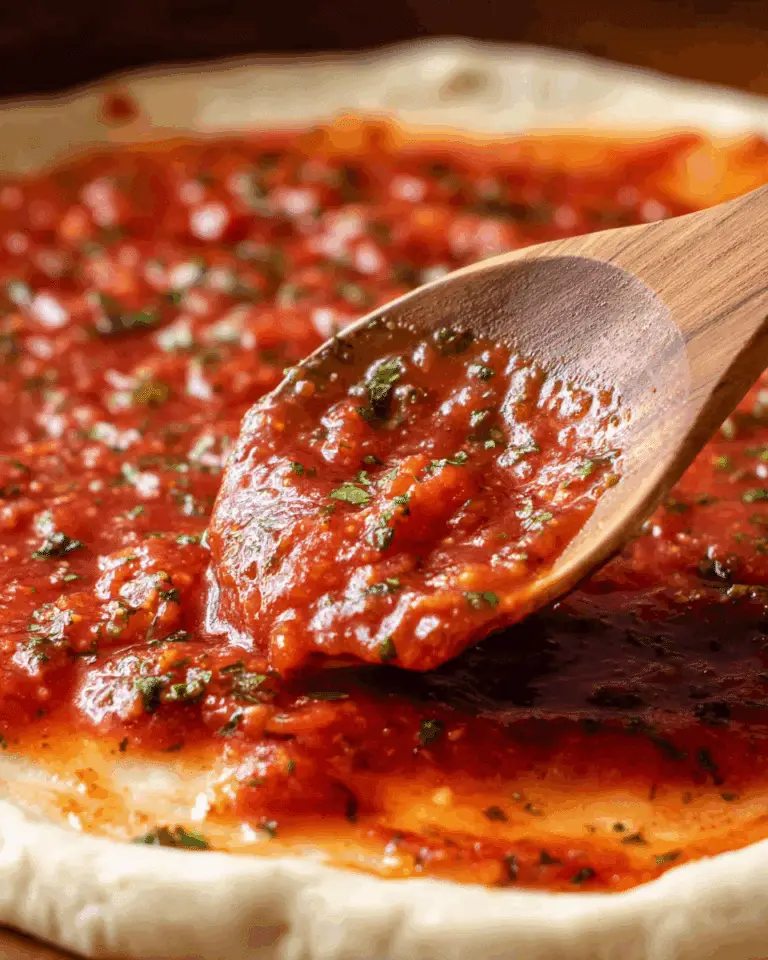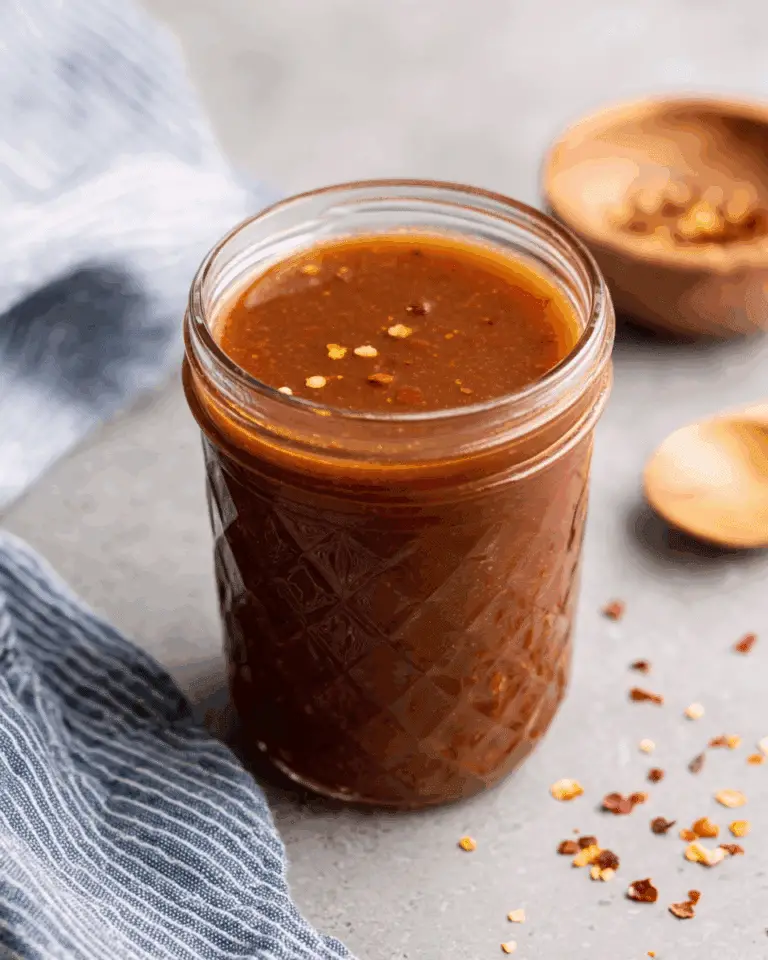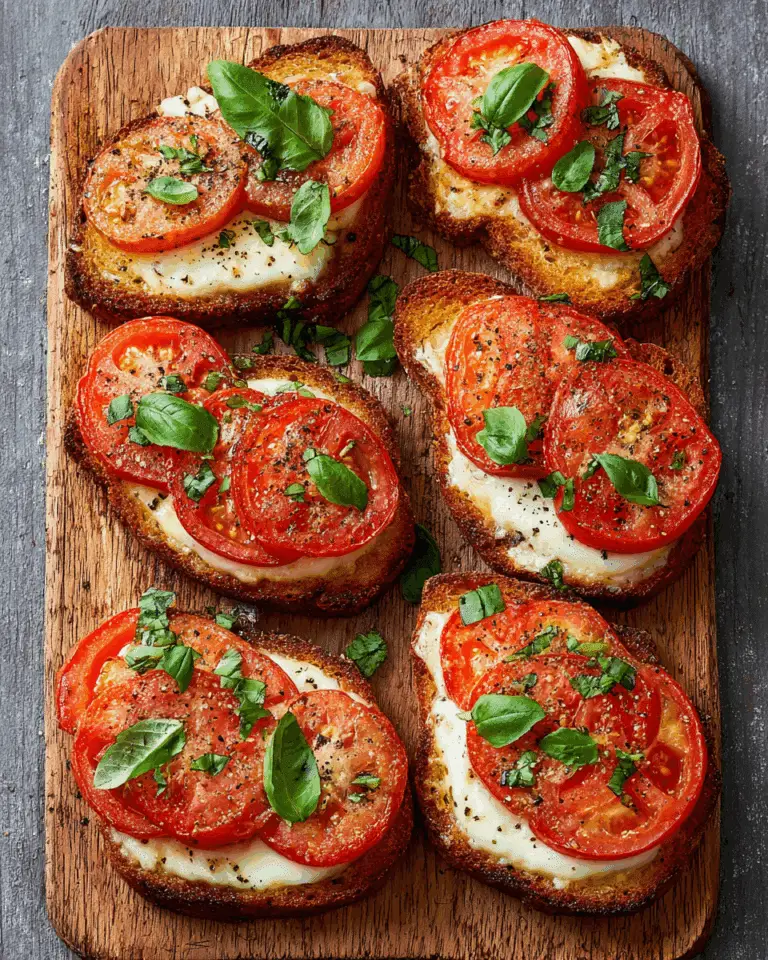Homemade Mayonnaise is a true kitchen triumph: with just a handful of everyday ingredients and a few minutes of effort, you’ll end up with a creamy, thick, and absolutely delicious condiment that completely outshines anything from the store. Whether you’re spreading it on a sandwich, stirring it into your favorite potato salad, or using it as a dip, this recipe for Homemade Mayonnaise transforms humble ingredients into a rich, flavorful staple you’ll want to make again and again.
Ingredients You’ll Need
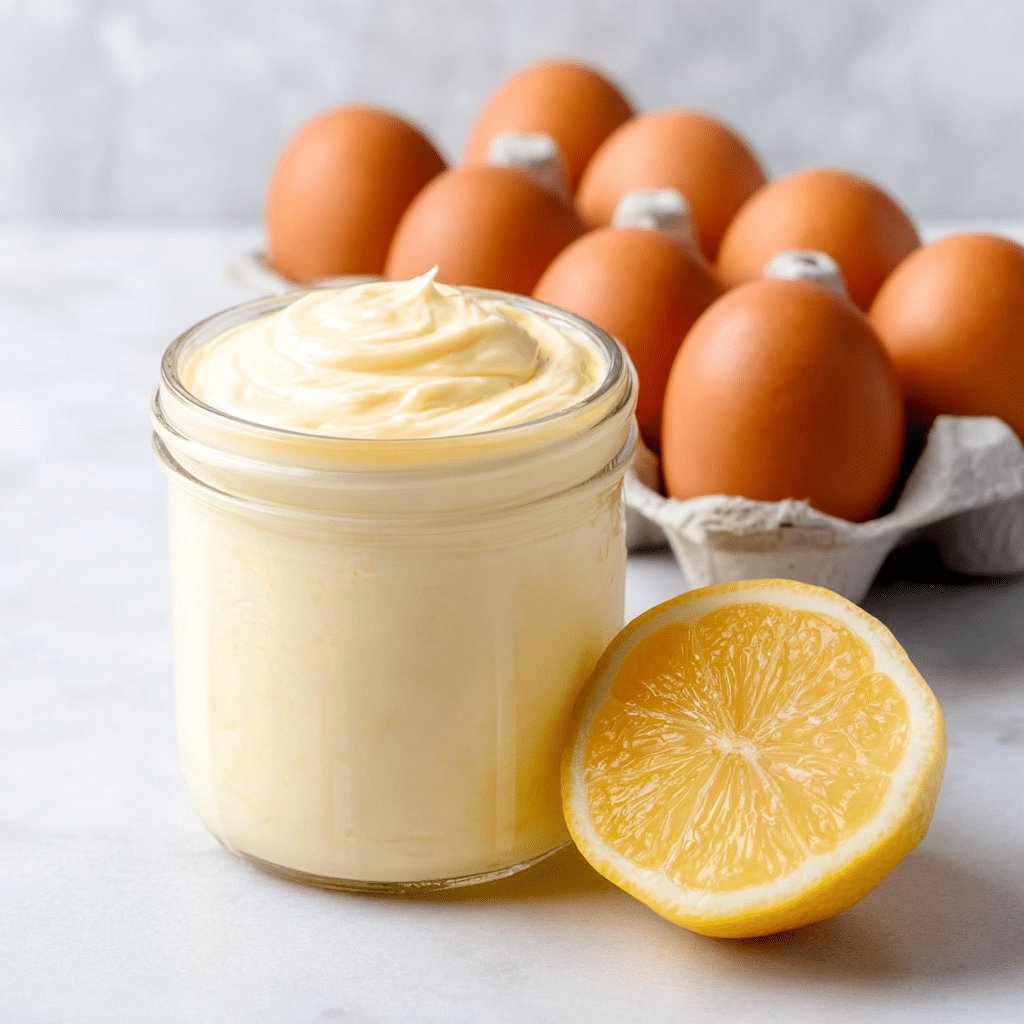
Ingredients You’ll Need
You only need a few simple ingredients to create Homemade Mayonnaise, but each one plays a crucial role in building that unmistakable taste and velvety texture. Here’s how every item adds its own magic to the mix!
- Eggs (2 large): The backbone of your mayo, eggs provide emulsification for that thick and creamy consistency—using farm-fresh eggs will give you the best flavor and color.
- Lemon Juice (1 tablespoon): Fresh lemon juice adds brightness and a subtle tang, keeping your Homemade Mayonnaise lively and balanced.
- Kosher Salt (1 teaspoon): Salt is essential to round out the flavors and ensure your mayonnaise is perfectly seasoned.
- Distilled Vinegar (½ teaspoon): A small splash sharpens the flavor profile and helps stabilize the emulsion.
- Ground Mustard (½ teaspoon): Ground mustard not only adds a pleasant, gentle heat—it also helps thicken the mayo and keeps it from separating.
- Extra Light Olive Oil (2 cups): Light olive oil is the secret to a pale, mild-tasting mayonnaise—avoid robust olive oils, which can overpower the delicate balance.
How to Make Homemade Mayonnaise
Step 1: Combine Base Ingredients
Start by cracking your eggs into a wide-mouth mason jar, making sure the jar is tall enough to handle blending without splashing. Add the lemon juice, kosher salt, distilled vinegar, and ground mustard directly to the jar. This precise combination gives your Homemade Mayonnaise its signature foundation—creamy, tangy, and beguilingly simple.
Step 2: Blend Until Creamy
Using an immersion blender, blend the egg mixture until it is fully emulsified and starts turning creamy and pale. This is where the magic happens! Keep your immersion blender at the bottom of the jar and don’t rush—this first blend sets the stage for that cloudlike texture you’re after.
Step 3: Slowly Add Oil
With your blender still running, begin slowly drizzling in extra light olive oil. Pour the oil in a steady, thin stream while gently moving the immersion blender up and down to fully integrate everything. Continue blending until all the oil is in, and the mayonnaise is thick, glossy, and beautifully homogenous.
Step 4: Adjust to Taste
Once fully blended, taste your Homemade Mayonnaise. If you find it a bit too mild, feel free to add a touch more lemon juice or salt. Like your mayo a little zestier? Stir in another pinch of ground mustard. This is your moment to tweak the flavors to absolute perfection.
Step 5: Store and Chill
Transfer your finished mayonnaise to an airtight container and pop it into the refrigerator. Homemade Mayonnaise thickens even more as it chills, making it perfect for spreading, dipping, or dolloping on just about anything.
How to Serve Homemade Mayonnaise
Garnishes
A finishing touch can take your Homemade Mayonnaise to the next level. Try sprinkling chopped fresh herbs like dill, chives, or parsley on top before serving. For a subtle kick, add a light dusting of smoked paprika or cracked black pepper. These little details aren’t just pretty—they add layers of flavor that play beautifully with the creamy base.
Side Dishes
Homemade Mayonnaise shines next to crispy french fries, roasted potatoes, or as a classic base for creamy coleslaw. It turns an ordinary tuna salad into something special, and is a wonderful partner for steamed asparagus or crunchy crudité platters. Don’t be surprised if you start reaching for it with everything!
Creative Ways to Present
Let your imagination run wild—serve this mayo in a charming ramekin with a swirl on top for easy dipping. If you’re entertaining, spoon Homemade Mayonnaise into a squeeze bottle and drizzle decorative patterns on plates. Or, spread a generous layer on rustic bread and top with grilled veggies for an irresistibly vibrant open-faced sandwich.
Make Ahead and Storage
Storing Leftovers
Homemade Mayonnaise keeps beautifully in the fridge when stored in an airtight container. Expect it to last 1 to 2 weeks, thanks to its natural acidity and salt content. Always use a clean spoon for scooping to keep it as fresh as possible.
Freezing
While it may be tempting, freezing Homemade Mayonnaise is generally not recommended. The emulsion will likely break when thawed, resulting in a separated, watery texture—not the creamy spread we love.
Reheating
Homemade Mayonnaise truly shines when served cold or at room temperature. It isn’t meant to be heated, as this can cause it to split or curdle. Instead, let it sit out for a few minutes to take off the chill, if desired.
FAQs
Is it safe to eat Homemade Mayonnaise made with raw eggs?
Using fresh, high-quality eggs greatly reduces the risk of foodborne illness, but if you’re concerned, look for pasteurized eggs at your grocery store. The acidity from the lemon and vinegar also offers an extra layer of safety.
Why does my mayonnaise sometimes turn out runny?
The trickiest part of Homemade Mayonnaise is the emulsion. If the oil is added too quickly or not blended thoroughly, the mayo won’t thicken. Take your time pouring, and keep blending until you see that luxuriously thick consistency.
Can I use a food processor instead of an immersion blender?
Absolutely! While an immersion blender makes the process extra foolproof, a food processor will work just fine. Add all the ingredients except the oil, blend, then drizzle in oil slowly with the motor running.
What other oils can I use in Homemade Mayonnaise?
Light olive oil is favored for its mild taste, but you can also use avocado, sunflower, or grapeseed oil. Avoid extra virgin olive oil unless you prefer a very pronounced, peppery flavor in your mayo.
How can I customize the flavor?
Homemade Mayonnaise is a blank canvas! Try mixing in roasted garlic, chipotle powder, fresh herbs, or even a touch of Sriracha to make it your own. You’ll never run short on ways to upgrade.
Final Thoughts
If you’ve never tried Homemade Mayonnaise before, you’re in for such a treat! This recipe is straightforward, quick, and yields a flavor so rich and fresh, you might never go back to the jarred kind. Give it a try, play around with seasonings, and discover just how versatile and rewarding making your own mayo can be!
PrintHomemade Mayonnaise Recipe
Learn how to make delicious Homemade Mayonnaise in just a few minutes. This creamy and flavorful mayo is perfect for sandwiches, salads, and dips. You’ll never go back to store-bought!
- Prep Time: 5 minutes
- Total Time: 5 minutes
- Yield: 3 cups
- Category: Dips and Spreads
- Method: Blending
- Cuisine: American
- Diet: Vegetarian
Ingredients
Eggs:
- 2 large eggs
Lemon Juice:
- 1 tablespoon lemon juice
Salt:
- 1 teaspoon kosher salt
Vinegar:
- ½ teaspoon distilled vinegar
Mustard:
- ½ teaspoon ground mustard
Olive Oil:
- 2 cups Extra light olive oil
Instructions
- Blend Ingredients: In a wide mouth mason jar, combine eggs, lemon juice, salt, vinegar, and ground mustard. Use an immersion blender to blend until creamy.
- Add Oil: Slowly stream in the olive oil while blending continuously until fully mixed and creamy.
- Adjust Seasoning: Taste and adjust with more lemon, salt, or mustard powder if needed. Mix well.
- Store: Transfer the mayonnaise to an airtight container and refrigerate.
Notes
- This recipe yields about 3 cups of mayonnaise.
- Each serving is based on 1 tablespoon for nutritional information.
- Homemade mayonnaise can be stored in the refrigerator for 1-2 weeks.
Nutrition
- Serving Size: 1 tablespoon
- Calories: 11kcal
- Sodium: 51mg
- Fat: 1g
- Cholesterol: 8mg

